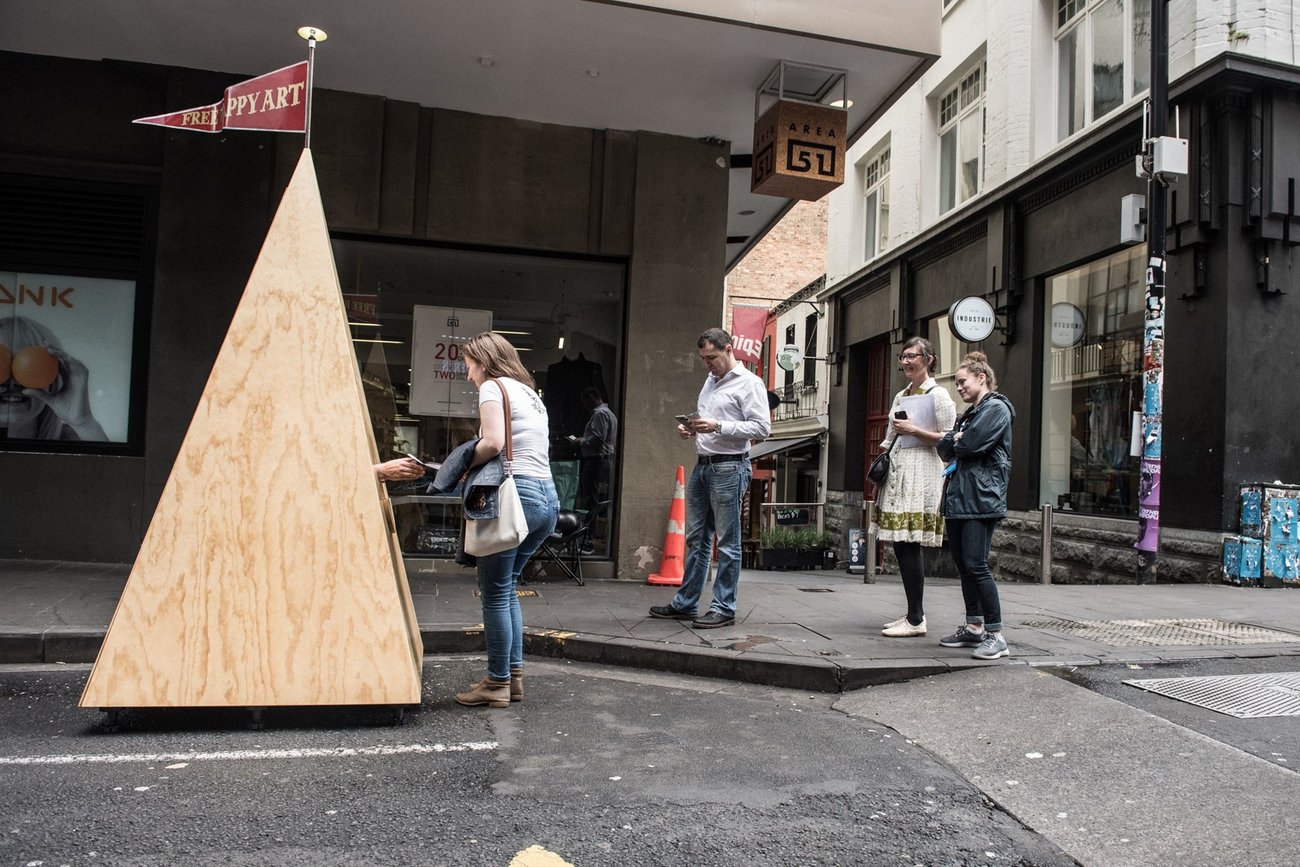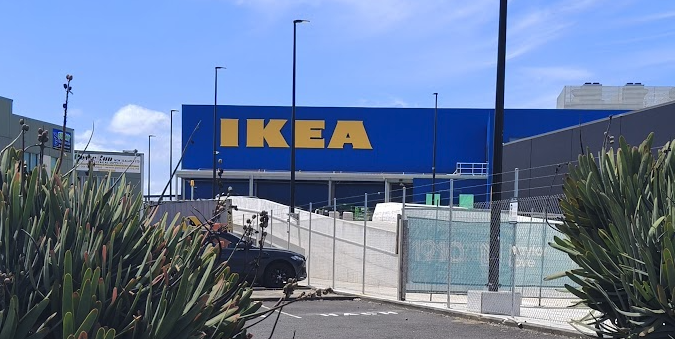‘All our shit stinks’: Matt Liggins on The Real Pyramid Schemer and public art in New Zealand

The Real Pyramid Schemer joins a collection of politically charged art pieces done by Liggins, who juggles his life as a university lecturer, architect and artist, which allows him to pay the bills while embracing his creative streak.
For Liggins, the idea behind Pyramid Schemer spurred when he moved back to Auckland, after spending time as an architect in both London and Sydney, and noticed how high the cost of living was, and how difficult it was for people to get on the property ladder.
Liggins says, “It grew organically from a series of ideas, into the pyramid schemer drawing and then I was approached do an installation for Art Week by director Deborah White and thought this was the perfect chance to give it a go.”
The features of the pyramid itself are a four-sided foundation made from plywood, with two holes to peep out of, and a crate box inside in which Liggins sits on and draws free art anonymously to the people. Described as ‘a non-intimidating design that invites engagement’ – The Real Pyramid Schemer took home a golden pin at the Best Awards last year, and stood out against the expensive, large scale and slick architecture of the esteemed bunch of award-winning architects and designers. Liggins fueled a different narrative in connection to urban design and art, one of wealth inequality, inflated housing prices and cultural angst in New Zealand. And its simple premise – to make people happy – presents a refreshing alternative to the often esoteric and elitist art space.
“It started off as a triangular structure or a pyramid, but it wasn’t connected to a pyramid scheme, or the divide between people. That came organically.”
{% gallery ‘real-pyramid-schemer’ %}
The concept is packaged up in his short film for ‘Everyday Humans’, which showcases a wild Liggins popping up in his pyramid structure across different New Zealand settings, brewing coffee on the beach, and sending his visceral philosophy out onto the world.
In the video he remarks: “I think everyone should be treated equally, whether you are the CEO, or a director, or a principal, or you’re the cleaner, or the janitor, we’re all the same, you wouldn’t get by without each other and I think people forget that, and I think it’s important to remember that.”
The pyramid is a further reaction to the imbalance of capitalism, which is backed by some pretty heavy Oxfam statistics that show the world’s wealthiest one percent get 82 percent of the wealth, and that the world’s eight richest individuals have as much wealth as the 3.6 billion people who make up the poorest half of the world. Reports also show rising inequality in New Zealand.
Liggins says while he, like all of us, can at times feel helpless, his pyramid schemer is an ode to the smaller things in life, and aims to help remind people of the importance of small gestures. And when he sat inside the pyramid structure drawing pictures, and asking people anonymously what made them happy, he says that mostly people attributed things like food, dogs and family to happiness, as opposed to material belongings.
He further states that the beauty of anonymity, is that if people saw his face they might not open up as much, and created an interesting connection with people.
“I liken it to a taxi ride, where people open up to the taxi driver, because they are only going to be there for five minutes, and know that they are going to get out, they won’t be stuck with them. I think people open up when they are not trapped.”
Liggins shares the importance of bringing art out of galleries and private functions and onto streets and communities.
“A lot of people don’t like going into galleries, they don’t want the spiel, they don’t feel like they belong, they are over it.”
It ties into another possible project for Liggins where he parodies the art scene by creating the most expensive art gallery in New Zealand, which he describes as a very small, very overpriced gallery, with one sculpture, one painting and one drawing.
While The Real Pyramid Schemer was an award winner, it adds to a collection of art pieces by Liggins that has included ‘the skyscraper I could never build’, and ‘the house of 9,873 plastic bags’, where he collected old plastic bags off people and built a tent to provoke more use of recycled materials in buildings. Asked about the importance of public art is in New Zealand, and whether or not the government should be funding something simply to make people happier, Liggins says “there is no reason why we shouldn’t see more publicly funded art. We need more culture rather than rugby, people are into other things”.




